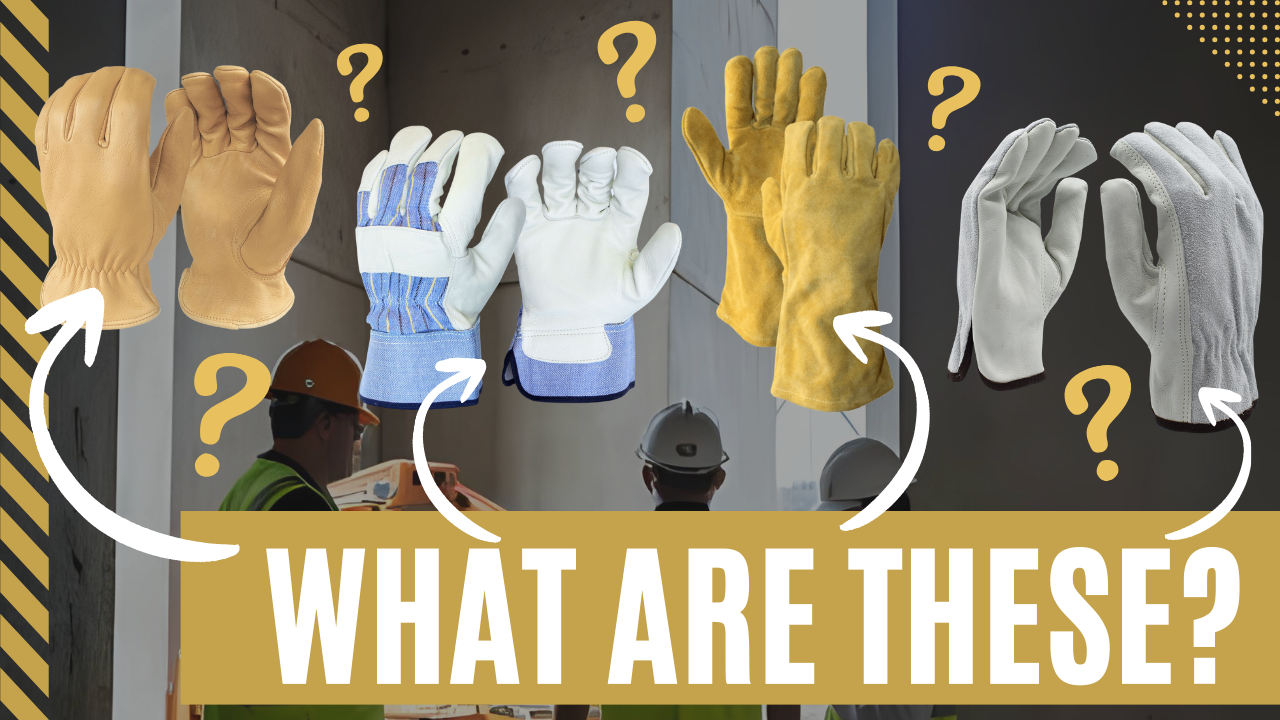
Buyer's Guide To Leather Work Gloves: Do you know the difference?
Grabbed a pair of leather gloves, but have no clue what they're called? Let's fix that.
There are four categories that each leather work gloves will fall under:
- Type of leather
- Grades of leather
- Quality of leather
- Design
Type of Leather
The most common types of leather used for gloves are cowhide, goatskin, and pigskin
- Cowhide - Durable and abrasion-resistant. The go-to for heavy-duty work.
- Pigskin - Softens when wet and stays breathable. Great for oily or wet conditions
- Goatskin - Thin, tough, and flexible. Perfect for jobs needing dexterity like mechanics or electrical work.
Less common types of leather are deerskin, kidskin, and elkskin, which are typically used in welding gloves for their softness, dexterity, and some heat resistance.
While pigskin has traditionally been a very common type of leather in work gloves, changes in the global supply chain have made this type of leather less common and more expensive.
Grades of Leather
Now let's talk about leather grades. This has nothing to do with quality ratings - it's about which part of the hide is used.
- Top Grain - The smooth outer layer of the hide. It's strong, flexible and used in premium gloves
- Split Leather - The inner layer after the grain is split off. It's more affordable and better at handling heat, but rougher in texture.
Quality of Leather
In leather glove manufacturing the leather hide is divided into A Grade, B/C Grade and Economy Grade. Each factory will have their own grading scale but the higher the grade the less cosmetic blemishes there are or other defects to the tensile strength of the leather.
When you think A Grade leather gloves, it will be 95-99% clear of blemishes and will have the proper thickness to last for a longer time. The B/C grade leather will typically have the same durability of an A Grade glove but with slightly more cosmetic blemishes that are naturally occurring in leather. Economy grade will have the most amount of cosmetic blemishes and might not have the most durable leather – ideal for a weekend job or temporary workers.
Design (The Different Types of Leather Gloves)
Leather Driver Gloves
Driver gloves are often made from full-grain leather. They are either unlined or winter lined. They fit snug and offer great mobility. Think of these as your everyday, all-purpose glove — perfect for nearly every job, but a little more expensive.
Above is Goatskin Leather Driver Gloves
Leather Palm Safety Cuff
Leather palm gloves are split leather with a fabric back. You get leather where you need it — in the palm — and airflow on the back. The safety cuff makes it easy to slide on and off. Great for material handling, landscaping, or cleanup work." Compared to a driver glove, they may be able to take less wear and tear than a grain leather driver glove but are typically more economical.
Above is Leather Palm Glove - Dozen Pack
Double Palm Safety Cuff
Double palm gloves add an extra layer of leather in the palm area for twice the durability. Ideal for demolition, rigging, or tough handling jobs where you burn through gloves fast.
Gauntlet Cuff
Gauntlet cuff gloves offer extended protection for your wrists and forearms. You’ll find these in metal work, welding, or any job with sharp debris or potential burns.
Welder Gloves
Welding gloves can be broken down into the different types of welding. There are Tig welding gloves, Mig/Tig welding gloves and stick welding gloves designed for heat. Usually made with cowhide, goatskin or deerskin, they’re fully lined and often come with a gauntlet cuff. Designed to handle sparks, slag, and heat while keeping your hands protected.
Above is Welding Glove



